
Short-Term Food Storage Basics: Part 1 – Getting Started
A beginner’s guide to short-term food storage and the differences between short-term and long-term food storage.
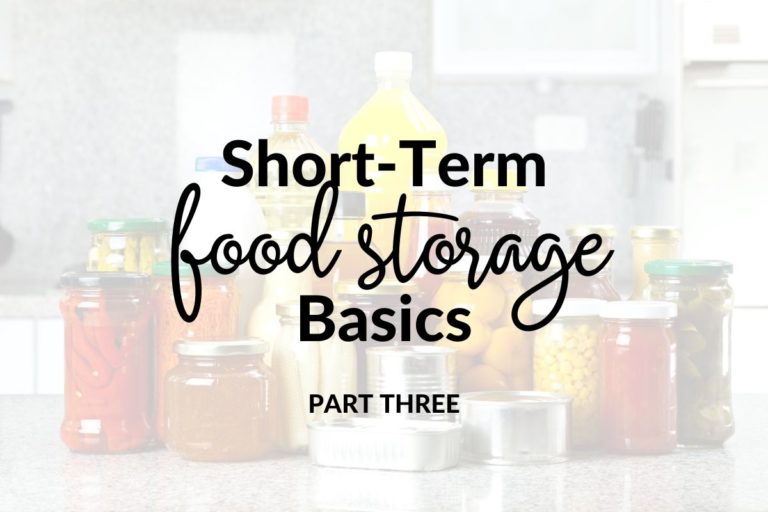
A valid concern with short-term food storage is where you’re going to put all of this stuff!
If you have a basement with a food storage room, you are one lucky person, and I am very very jealous.
Even if you do have an entire room to dedicate to this, you may still find some of these tips helpful, so keep reading.
If you have a large pantry with deep shelves, use that space!
Put multiples of the same item behind each other, allowing you to still see everything that you have in front.
If you have an insanely tall top shelf with lots of underutilized space, add a shelf in between the top shelf and ceiling.
Large Lazy Susans are a way to utilize the deep corner spaces in your pantry so things don’t get lost back there.
Utilize the floor for larger items (Example: 5-gallon buckets of sugar, flour, etc.)
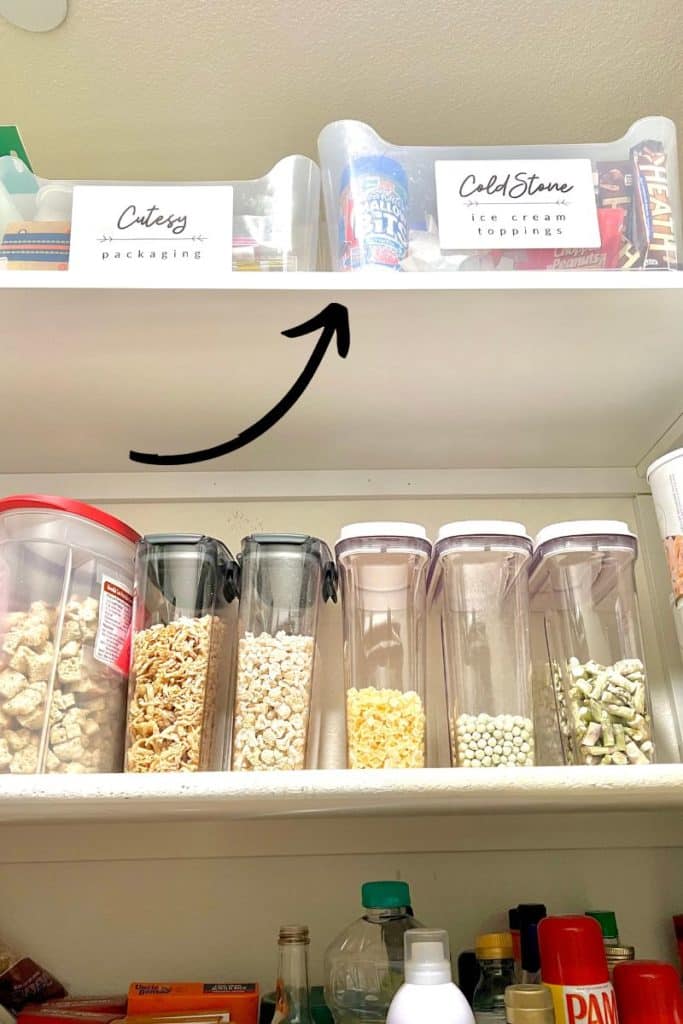
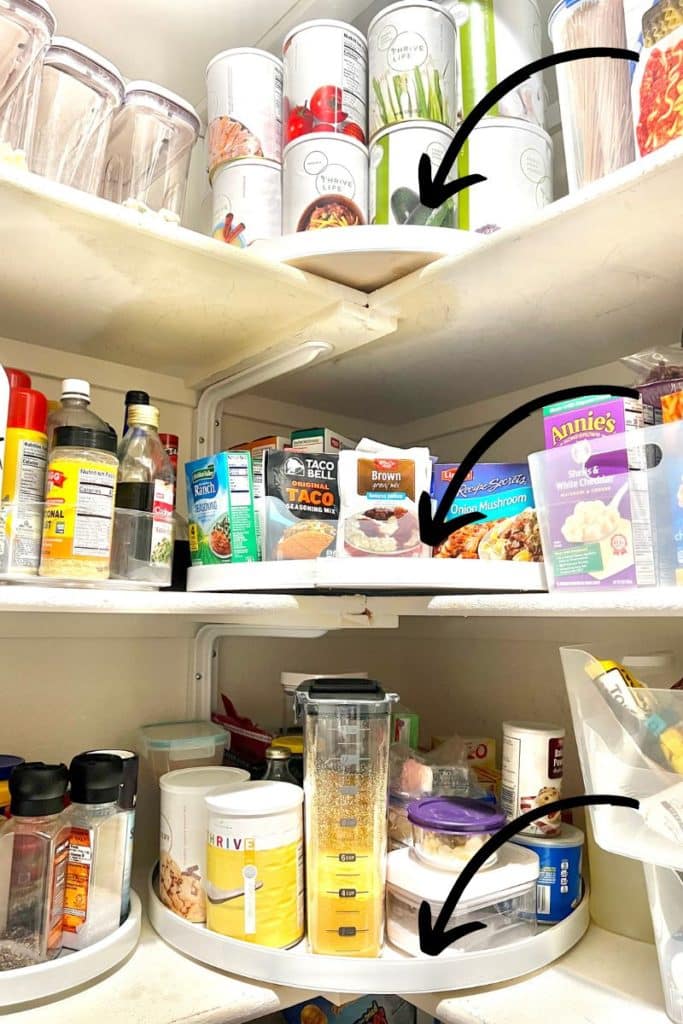

Unless you have a ginormous pantry, you will likely get to a point where you will need somewhere else to put your overflow.
DO NOT USE YOUR GARAGE (unless it is climate-controlled).
Designate ONE space in your home that will serve as your overflow area for all short-term food storage, where it will be convenient to do a quick visual inventory.
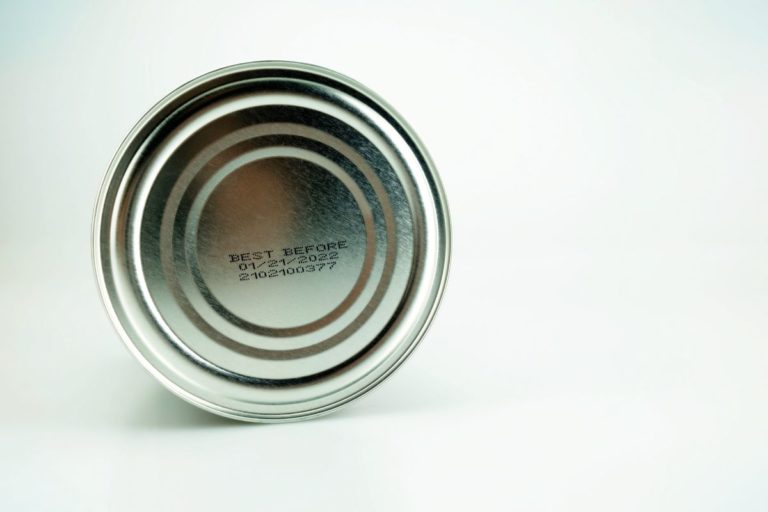
As your short-term food storage increases, you’ll need to start paying attention to expiration dates.
Example: If you already have 3 months’ worth of an item and want to double it so you have 6 months’ worth, you need to make sure the expiration date of what you are buying is at least 6 months out.
Bottom Line: Don’t purchase more of an item than you can go through before the expiration date.
You’ll find that there are some items that you just can’t store a year’s supply of, due to shelf life.
When this happens, you’ll need to think of substitutions for that item that have a longer shelf life, or see if that item is available freeze-dried or dehydrated.
Example: I have noticed that tomato paste is something that I really need to pay attention to. I can’t say that I’ve had a ton of bulging cans in my life, but tomato paste is one of the things I have thrown away multiple times, due to a bulging can that was past its expiration date.
While the expiration dates are usually about a year out when I purchase them, I sometimes find that I have overbought, and I don’t go through them before they expire.
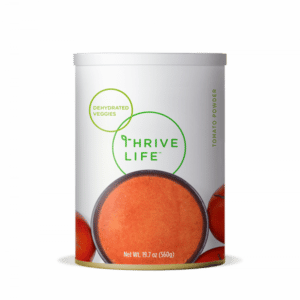
By purchasing Tomato Powder, I not only end up saving a ton of storage space, but I also don’t have to worry about checking expiration dates and throwing away expired cans.
Bottom Line: In some instances, things that you might think of as “long-term food storage” can actually help you fill in the gaps of your short-term food storage!
You can read all about my favorite system for rotating food storage in this post.
If you are putting several of the same item in your pantry, be sure you are putting your NEWEST items in the BACK!
This can be a pain, I know, especially when you’re in a hurry to put your groceries away.
But if you don’t do this, you end up using the newest stuff first, and the old stuff never makes it out to the front. And then you’ve got wasted food.
Cans are especially a pain to rotate.
It is SO tempting to just put the cans in front when you’re unloading your groceries.
As your number of cans increases, I would highly encourage you to consider a can rotator. There are lots of DIY ones online, as well as completed ones for purchase.
I have had the can rotator mentioned above for over 10 years and love it. It is an investment, for sure, but I cannot tell you how amazing it is to be able to come home from the grocery store, hand one of my kids the bag of cans, and not have to give any instructions whatsoever. They know what to do. And I know that the cans will all be perfectly rotated. Every. Single. Time.
Space – Go on a tour of your house and notice where you could better utilize your space and designate an area specifically for food storage overflow.
Expiration – Before throwing a bunch of one item in your cart, check the expiration date and make sure you’ll go through that many of that item before the expiration date.
Rotation – Commit to taking the time when unloading your groceries, to put the newest stuff in the back.
If your budget and space allows, consider ordering your Can Rotator or Cansolidator today.
Extra Credit – Go through your pantry and toss any spoiled food.

A beginner’s guide to short-term food storage and the differences between short-term and long-term food storage.
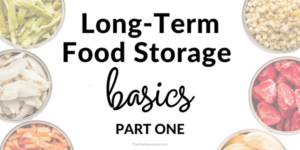
Answers to some of your most asked questions about long-term food storage, including the difference between dehydrated and freeze dried food.

In addition to our emergency water storage, you should also have a way to filter water in an emergency. These are hands down, the best option for water filtration for families!
